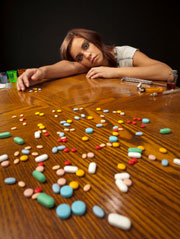
In April 2012, the US Centers for Disease Control and Prevention released some startling statistics on the number of teens being lost to prescription drug abuse. Between the years 2000 and 2009, the number of children losing their lives to poisoning went up 90%. The CDC stated that the major reason for this increase is the growing abuse of prescription drugs by teens.
It’s doubtful that parents perceive that teen deaths related to prescription drug abuse skyrocket. They may only see that their child died, or perhaps they were lucky and their child was simply rushed to an emergency room for an overdose but survived. Or maybe they got the young person into a rehabilitation center in time to prevent these dire circumstances.
Despite Advanced Protections of Children, US Rate of Child Deaths is High
It could be argued that the US has far more protections of their children than most other countries. There are multitudes of laws in place to protect children or create safe communities. Despite this, the US has a rate of child injury death – including drug poisoning – far greater than many other countries. For example, the US rate of 8.65 children’s injury deaths per 100,000 people is more than four times that of Sweden and nearly twice that of Canada. Among American states, the worst rates are seen in South Carolina, Alaska, Oklahoma, Louisiana, Wyoming, South Dakota and Mississippi.
Teens Acquire Prescription Drugs Most Often from Medicine Chests
The primary way that teens acquire prescription drugs to abuse is by stealing them from their own home or the home of someone else. Even a guest who has a pill bottle in her purse could have some pills stolen by a teen with a craving for drugs. Addictive medications, particularly pain pills, must be protected from theft by storing pill bottles in a locked medicine chest. While this is inconvenient, any visitor to the home could steal just enough pills that the shortage might not be noticed. When teen deaths related to prescription drugs skyrocket, then changes need to occur.
At Narconon, Drug Addiction to Pain Medication Can be Overcome
A person who becomes trapped in addiction does not have to feel like their formerly happy life is gone forever. They can recover their personal integrity again and learn how to live sober. And it does not have to be a grim struggle to overcome an assault of daily cravings.
For Narconon, drug addiction responds to a long-term holistic program that deals with the three main components that trap a person in addiction: guilt, cravings and depression. It has been found in forty-five years of helping addicts recover their sobriety that guilt, cravings and depression can be lifted and eliminated. There do not need to be further drugs administered to cover up these problems and give a person a weak apparency of an enjoyable life. Cravings can be addressed with the Narconon New Life Detoxification Program, a thorough detox that flushes out residues from drug use that become stored in fatty tissues. The presence of these residues have been shown to contribute to the triggering of cravings. Those finishing this detox talk about how much lower their cravings are. Some people even say they are gone.
Guilt is lifted by helping a person understand how personal integrity is lost and how it can be restored again, then guiding them through that process. As guilt is replaced by relief, it is common for those in this phase of recovery to talk about the weight that is lifted from them.
Depression can be lightened for some people by boosting their physical condition with nutritional supplements. It is well known that drugs and toxic exposures cause the body to burn up nutrients, so administering generous doses of nutrition help lift the mood. Then as a person works through repairing relationships that were damaged in the past and recovering self-esteem, depression related to addiction usually needs no further treatment.
Learn more about Narconon; drug addiction does not have to destroy the life of someone you love. Call today for further information: 1-800-775-8750.
Resources:
http://www.cdc.gov/vitalsigns/ChildInjury/infographic-text.html